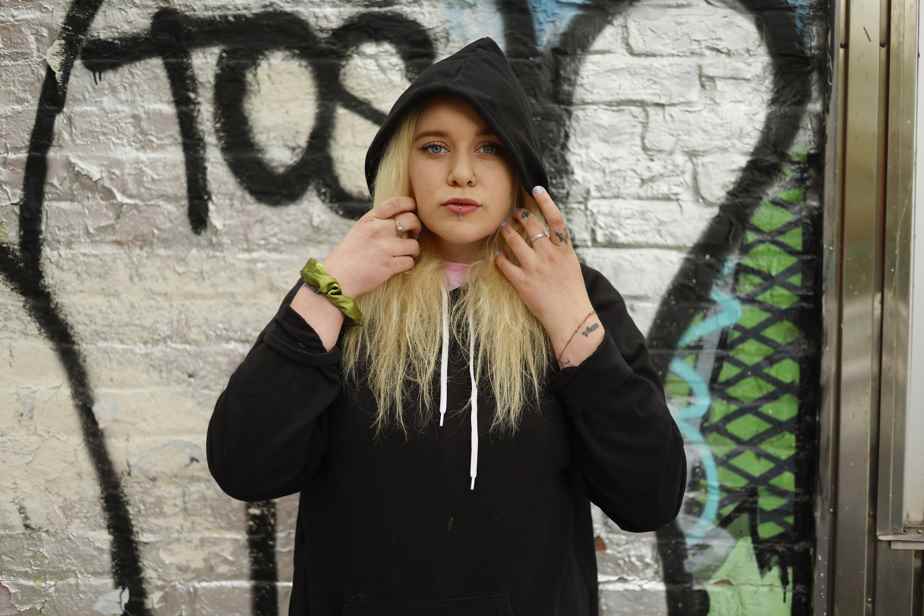The Russian roulette of street drugs, Stéphanie Rondeau has played it more often than not. She thought she could stop whenever she wanted. She was wrong.

Like many teenagers, it was in high school that Stephanie began using cannabis. His brother, 11 years his senior, paved the way for him.
“I saw him doing his experiments, he was doing the party. It made me curious,” she says.
The stormy divorce of her parents also leaves Stephanie with a “great wound”.
“I realized that it came to fill a sadness. I didn’t think about it for a while and it felt good, ”she explains about her consumption.
But the teenager is not one to settle for an occasional joint.
As soon as I started a substance, I always wanted more. It was everyday and I was never satisfied. There was always something to make me buzz more.
Stephanie Rondeau
She switches to MDMA (the active molecule of ecstasy), to ketamine, then to cocaine. His school career suffers. She gets kicked out of two high schools and ends up in drug therapy.
“I was disrespectful to everyone, I was very self-centered — like a lot of consumers. I was losing my values a lot to think about my consumption, ”she says.
The therapy is paying off. For six months, Stephanie is completely sober.
“I felt like I had a second chance, I was concentrating on finishing secondary 4. I had a boyfriend who did not consume. I was doing ultimate frisbee, graffiti, photography,” she says.
But things go wrong when he arrives at CEGEP. She breaks up with her boyfriend with “anti-drug” ideas and has the impression of regaining her freedom.

PHOTO MARTIN CHAMBERLAND, THE PRESS
“I also know that I am my own worst enemy. I didn’t need anyone to consume,” recognizes Stéphanie Rondeau.
“There, it went into a spin. I made new friends who used and I used every day. In the evening, I fell into the coke like it can’t be,” she said.
She soon goes out with her dealer, who introduces her to the needles. Stephanie begins injecting her cocaine – a practice which leads to her contracting hepatitis C.
Xanax and Dilaudid
But the young woman really hits a wall when she learns about two types of drugs: benzodiazepines and opioids.
The former, often sold on the black market as Xanax tablets (an anti-anxiety drug), actually contain a myriad of substances. They are highly addictive.
It’s even worse with opioids. Stephanie uses Dilaudid, a counterfeit painkiller. The drugs make her feel “numb, disconnected.” But Stéphanie quickly realizes that she has just taken a step.
It’s not the same anymore game. After a few days of consumption, you feel the physical lack: big aches, the neck, the shoulders. I woke up in the morning and I was in pain. I was hot, I was cold, I had sweats, anxiety, nausea, vomiting. It didn’t work anymore.
Stephanie Rondeau
Paradoxically, Stéphanie then worked for the organization CARE… in harm reduction with drug users. His withdrawal symptoms lead him to consume Dilaudid before going to work to calm them down.
“But I was in a bit of a limbo, so to show that I was fit to work, I was going to the toilets to do coke, she says. It’s a spinning wheel…”
Thanks to her work, Stephanie has easy access to test strips capable of detecting fentanyl, a dangerous opioid that contaminates all kinds of drugs and causes a large number of overdoses. She uses them to test her own drugs.
“Sometimes I saw that there were some in the coke or Xanax, but I took them anyway. I said to myself: I can’t throw away my drink! “, she says.
At a family party, she bumps into her grandfather, a 35-year-old sober ex-user.
“He looked at me and said, ‘oh boy. You’re not okay anymore”. My grandfather knows me quite well. For me, he’s a bit of a mentor. I said to myself: if he notices it…”
She decides to go get help. Today, Stephanie is taking Suboxone to manage her opioid withdrawal. She is pursuing a DEC in special education and dreams of becoming a street worker.
She says she still uses cocaine occasionally, but doesn’t want to know about opioids anymore.
“I have a few friends that I distance myself from a bit because I know that with them it would be too easy to fall back into this,” she says. But I also know that I am my worst enemy. I didn’t need anyone to consume. »
